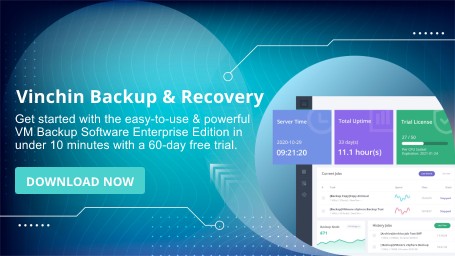-
What is vSphere vSwitch?
-
Network Components of ESXi
-
vSwitch Configuration
-
Simplify VMware backup and recovery
-
Conclusion
VMware vSphere is a robust virtualization platform that offers a wide range of tools and features to efficiently manage and operate virtualized environments. Within the vSphere networking infrastructure, the vSwitch plays a crucial role as a fundamental component.
In a physical network topology, the typical connection is between a router, a switch, and a PC. Different servers and PCs are interconnected through the connections of the switch.
In the VMware vSphere architecture, servers virtualize switches for ESX Host virtual machines to use. There are two types of virtual switches: vSwitch and vNetwork Distributed Virtual Switch. Each ESX Host has a standard vSwitch.
What is vSphere vSwitch?
vSphere vSwitches are software-based switches that allow multiple virtual machines connected to them to communicate with each other. Currently, there are two different types of vSphere vSwitches:
Standard Switch: This type of switch connects multiple virtual machines located on the same host or different hosts, enabling them to communicate with each other. Each ESXi host must have at least one standard switch configured for communication with the external physical network. Multiple networks can coexist on the same switch or exist across multiple separate standard switches.
Distributed Switch: Distributed switches can be distributed across each ESX host, greatly extending vSphere network connectivity and enabling centralized management. Distributed switches simplify data center management by maintaining consistent configurations across all ESXi hosts using them. It supports advanced features such as dedicated VLANs, NetFlow, and port mirroring. During the migration process using vMotion, a distributed switch migrates network connection statistics and policies along with the virtual machines. Additionally, it supports customization and third-party development.
Network Components of ESXi
1.VMNIC: In ESXi, physical NICs are named vmnic, with the first one being vmnic0, the second one vmnic1, and so on. After installing ESXi, the vmnic0, is added by default. Advanced features of vSphere require multiple NICs.
2. Virtual Switch: vSwitch is provided by the ESXi kernel and serves as a virtual switch, connecting different virtual machines and management interfaces. A vSwitch can consist of one or multiple vmnics, and different vSwitches cannot use the same vmnic. The default installation includes the first virtual switch, vSwitch0, which is used for the management console, virtual machine connectivity, and other functions.
3. Communication Ports/Port Groups: These are primarily used to provide functionality for the Service Console, VmKernel, and virtual ports. All network operations in ESX are based on the interaction between port/port groups, vmnics, and vSwitches.
4. NIC Team: This involves integrating different NICs onto the same channel to increase speed, provide failover capabilities, load balancing, and other functionalities.
vSwitch Configuration
VMware vSphere virtualizes one or multiple virtual switches, which provide multiple virtual ports for virtual machines to connect to the network, and they establish connections to the external physical network through the vmnic on VMware vSphere server.
The status of virtual switches can be viewed in the VMware vSphere Client by navigating to the configuration of the ESX host and accessing the network properties.
By examining the properties of vSwitch0, you can see the number of virtual ports configured for this vSwitch.
Through editing, you can modify the port count of vSwitch0, with a maximum support of up to 4088 virtual ports.
You can also view the properties of the VM Network virtual machine port group.
The Service Console port must be configured with an IP address, with the default name for the first Service Console being vswiff0, followed by subsequent names.
Similarly, the VMKernel communication port must be configured with an IP address and is primarily used for vMotion, connecting to storage devices via iSCSI or NFS, and logging Fault Tolerance events.
The Virtual Machine port group is used to connect ESXi virtual machines to either a physical switch or a vSwitch.
In the Management Network Properties page:
Select Properties to configure network lable and VLAN ID.
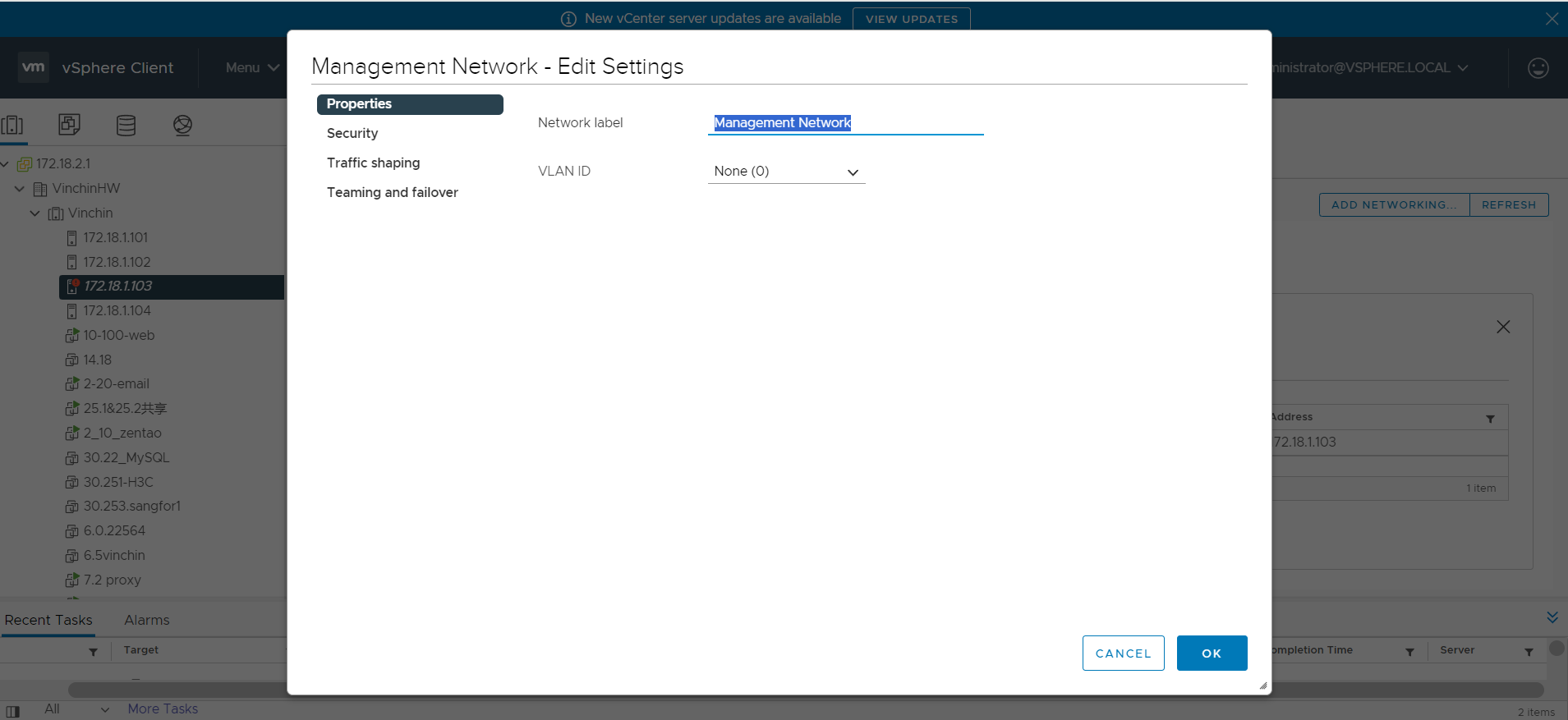
Select Traffic Shaping to set traffic limits for the network card.
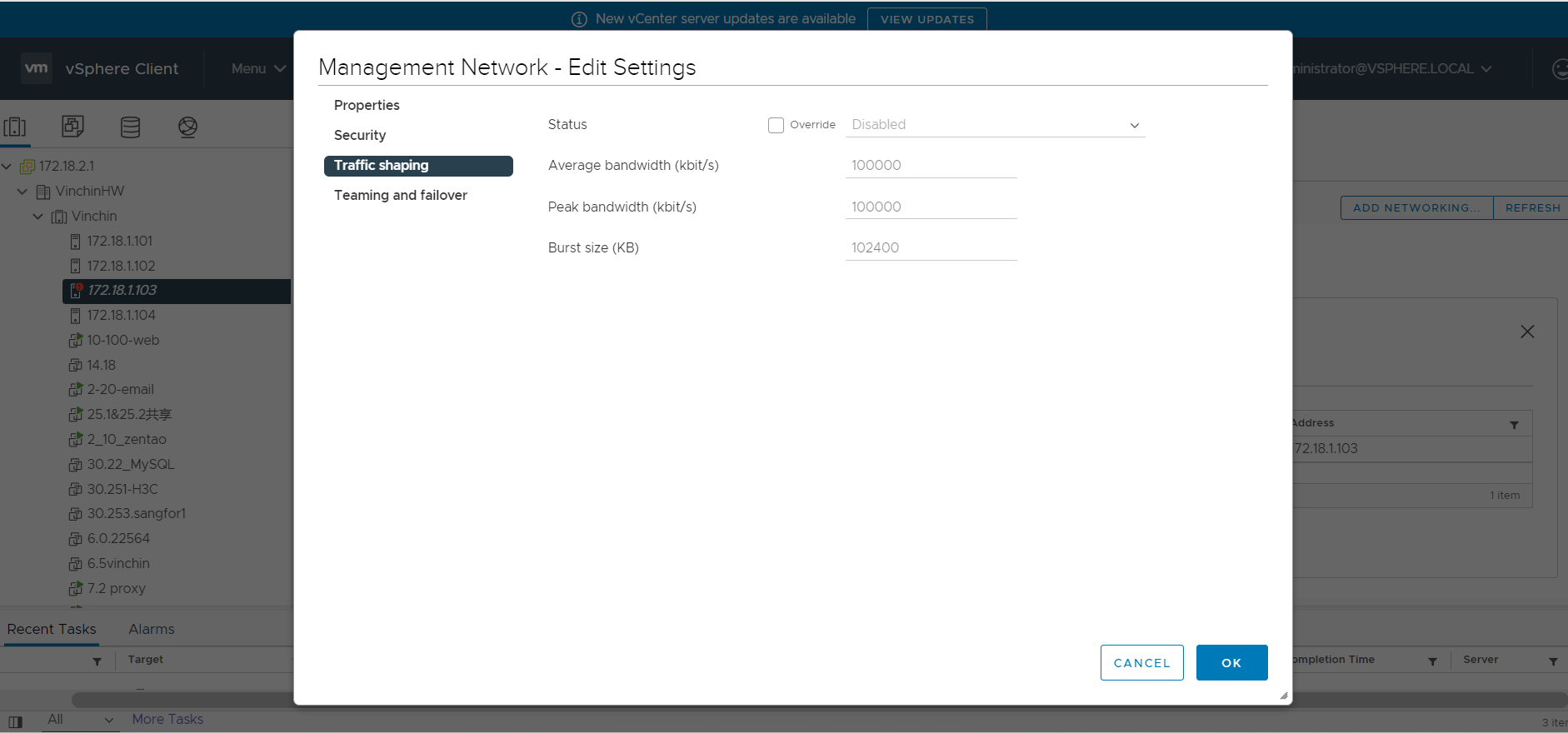
Select Teaming and failover to configure load balancing when multiple network cards are available.
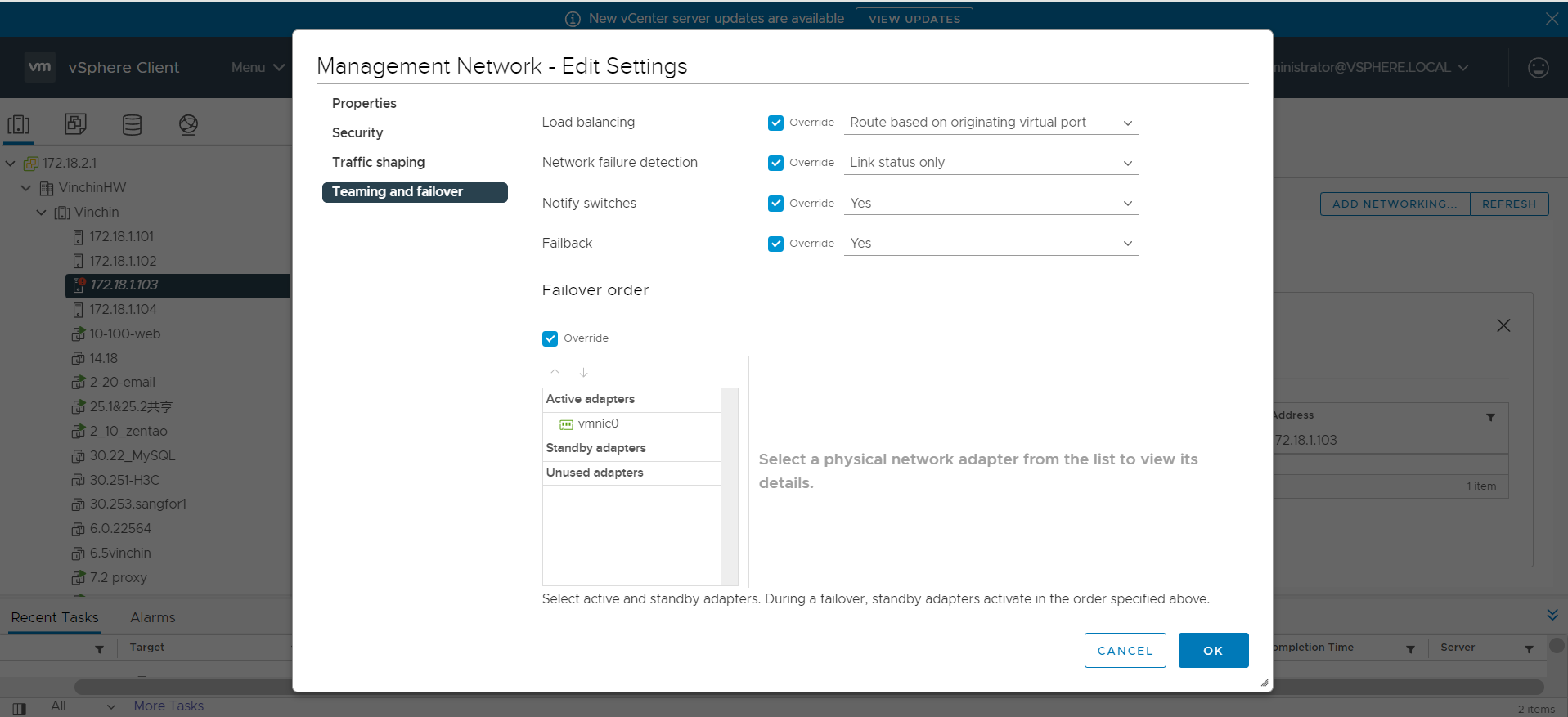
Add or remove vmnics connected to the virtual switch.
There are three types of virtual switches that can be added: the switch that provides ports for virtual machines, VMkernel for connecting to iSCSI and NFS storage or for vMotion, and the Service Console for configuring IP and managing the ESX host.
Adding VMkernel:
1) Select the vSwitch to be used by VMkernel for the connection type.
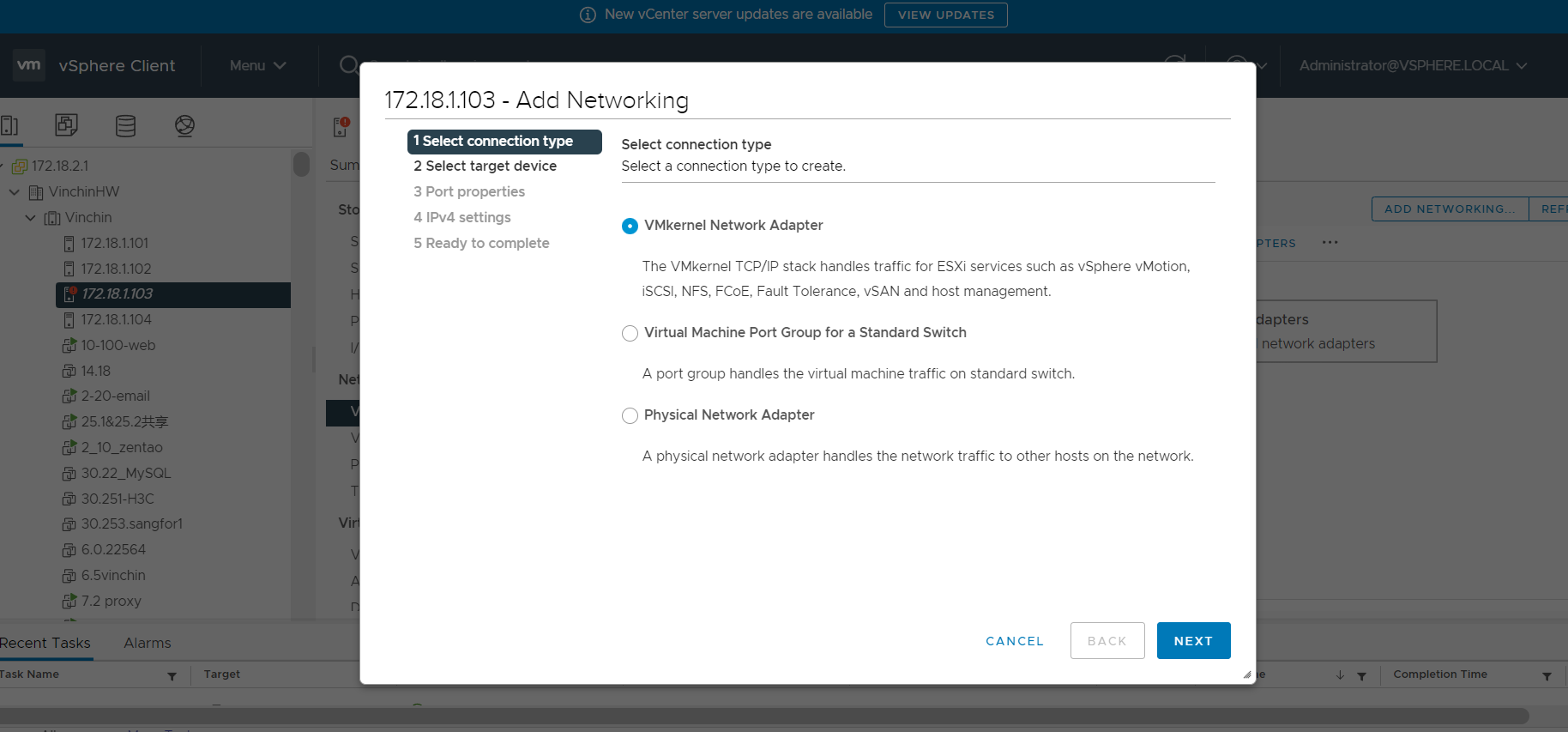
2) Select a target device for the new connection.
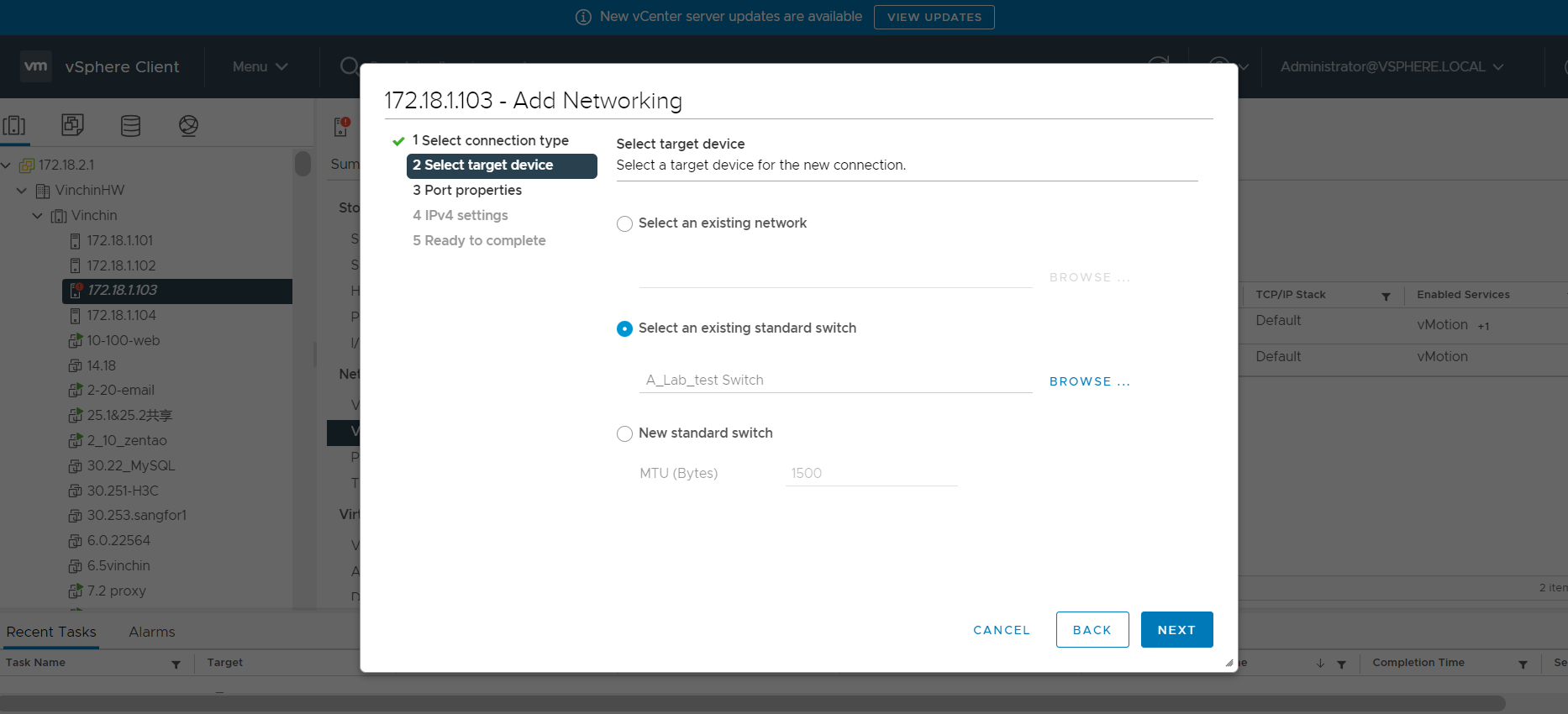
3) Enter the name and VLAN ID.
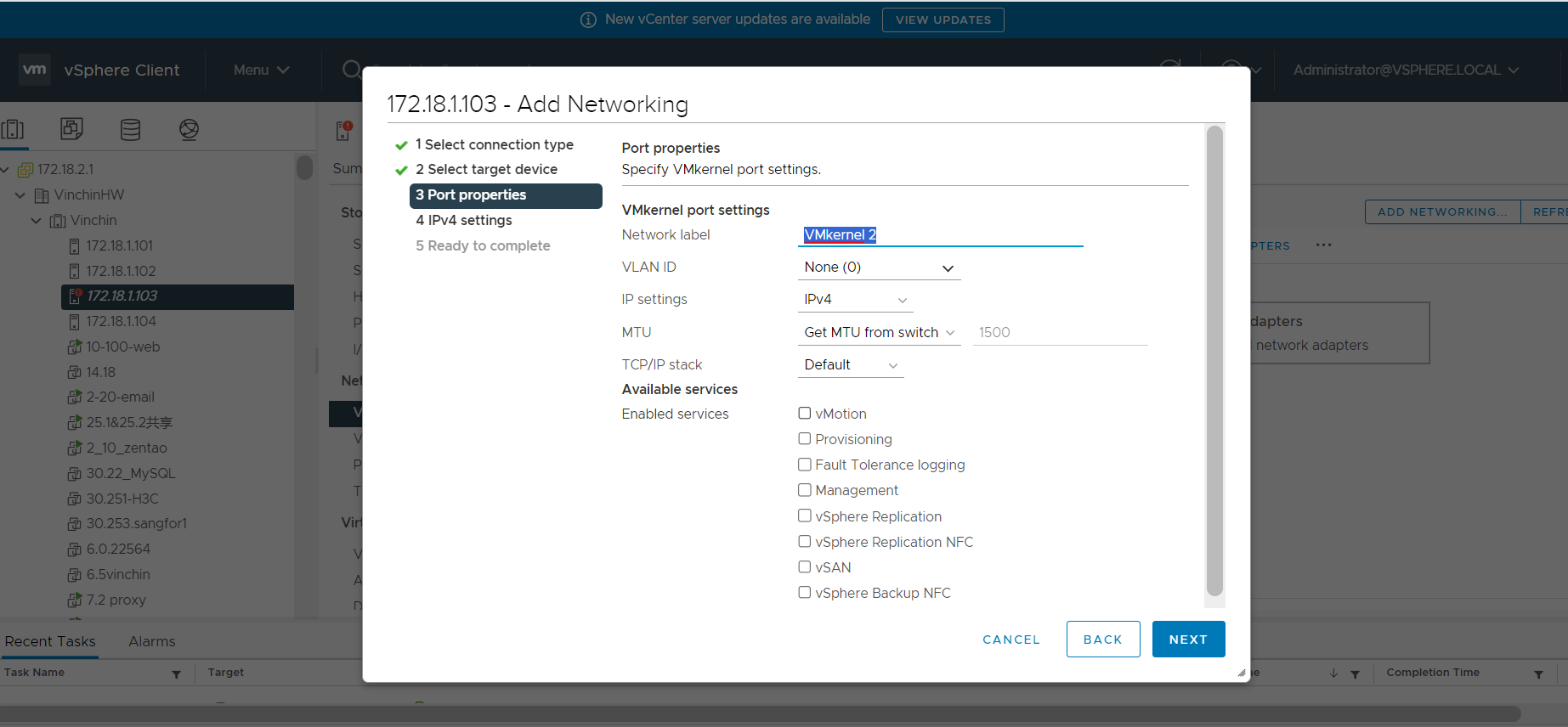
4) Configure the IP address and gateway for VMkernel.
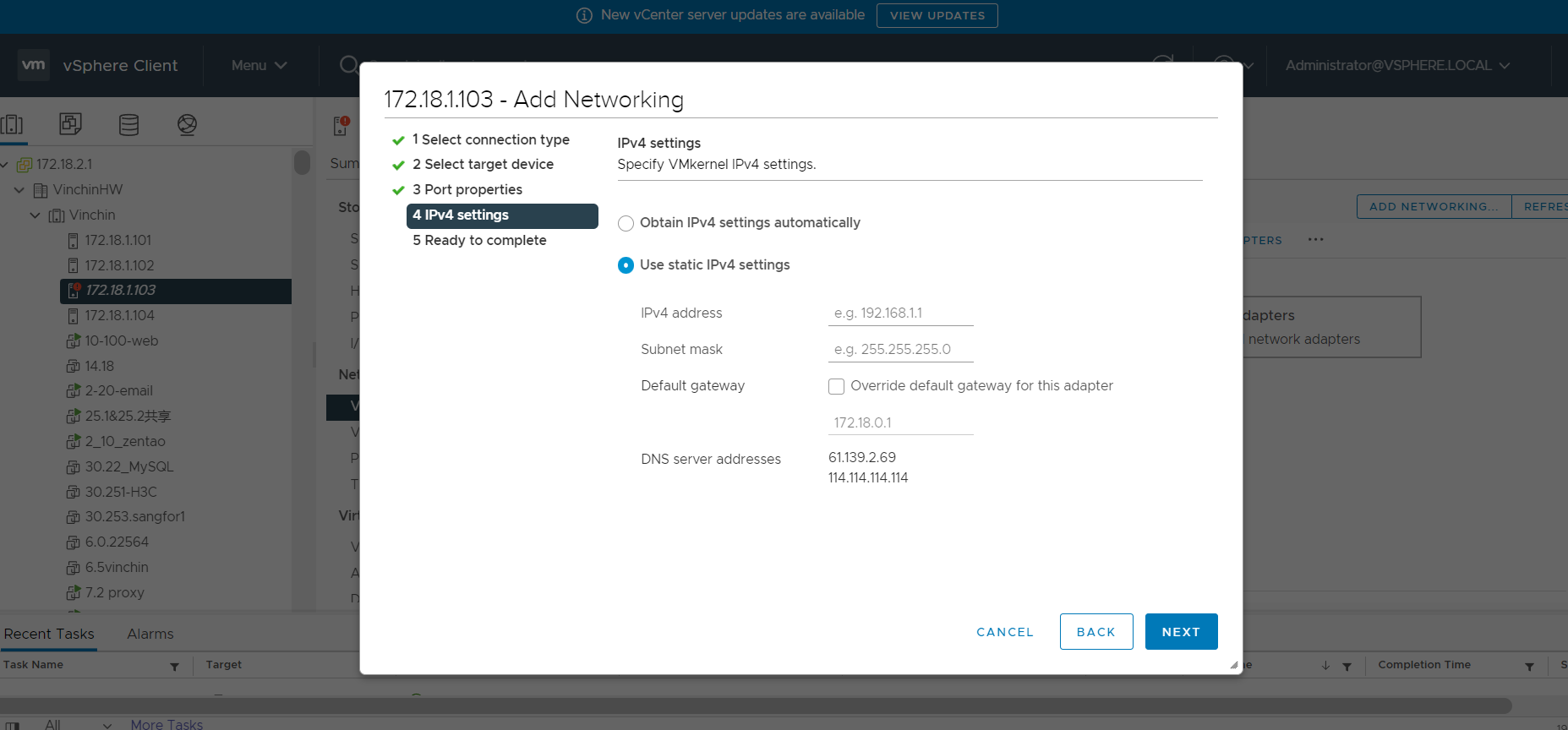
5) Confirm the addition of VMkernel configuration.
In addition to the default vSwitch, we can also add our own vSwitch. However, it’s important to note that the same vmnic can only be configured on one vSwitch. Select the network card to be used for the new virtual switch, provide a name and VLAN ID, and confirm the configuration. After adding it, you will see a new virtual switch, vSwitch1, in the network of the ESX server.
In addition to Standard Switches, VMware also offers Distributed Switches, which can span multiple ESX Hosts. When using a Distributed vSwitch, VMs across multiple ESX Hosts are connected as if they were on the same vSwitch. VMs also can be migrated between any ESX Hosts.
Simplify VMware backup and recovery
VMware vSwitches play a crucial role in virtualized environments by providing network connectivity and enabling communication between virtual machines and external networks. However, to better protect your VMware environment, it is recommended to choose a professional solution to backup your virtual machines.
Vinchin Backup & Recovery is a solution that specializes in VM backup and recovery which provides a user-friendly management interface to configure backup policies for vSphere 8/7/6/5/4. Vinchin Backup & Recovery applies multiple innovative technologies for better data backup, data restore, storage-saving and anti-ransomware results, protecting your critical VMware VM data in an all-around way. It also allows the smooth V2V migration from other platforms to VMware and vice versa without any command lines or extratools.
To back up vSphere VMs with Vinchin Backup & Recovery, following these steps:
1. Select a VM
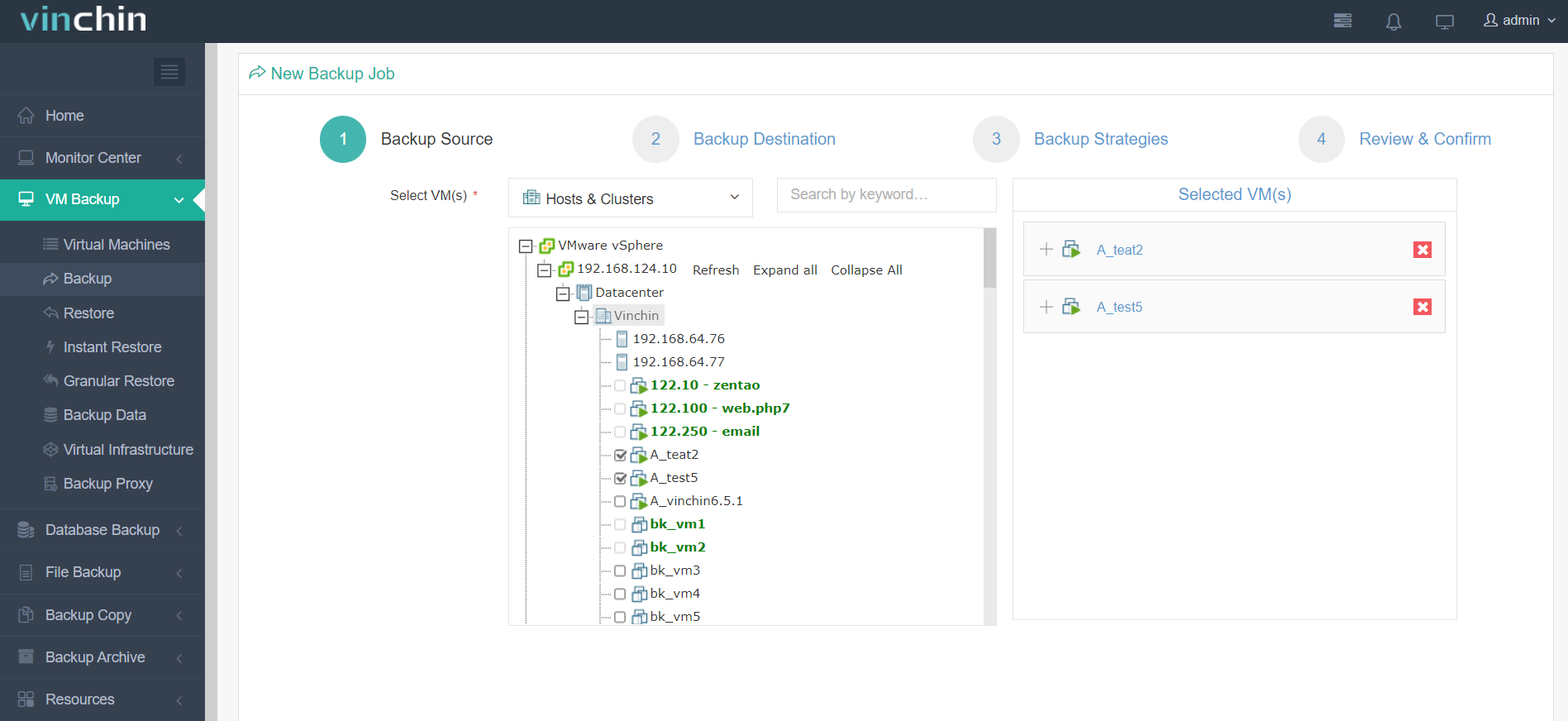
2. Select backup destination
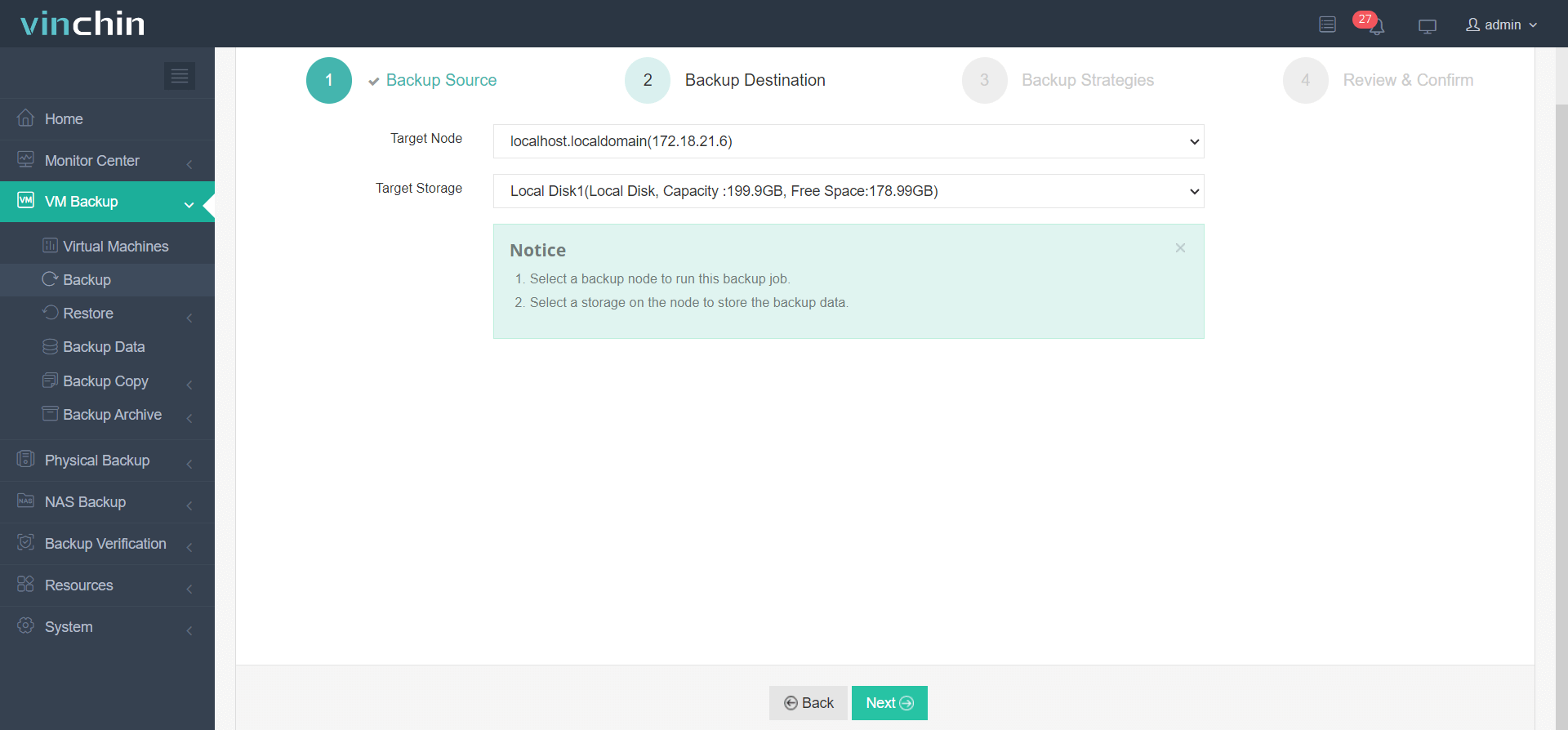
3. Select backup strategies
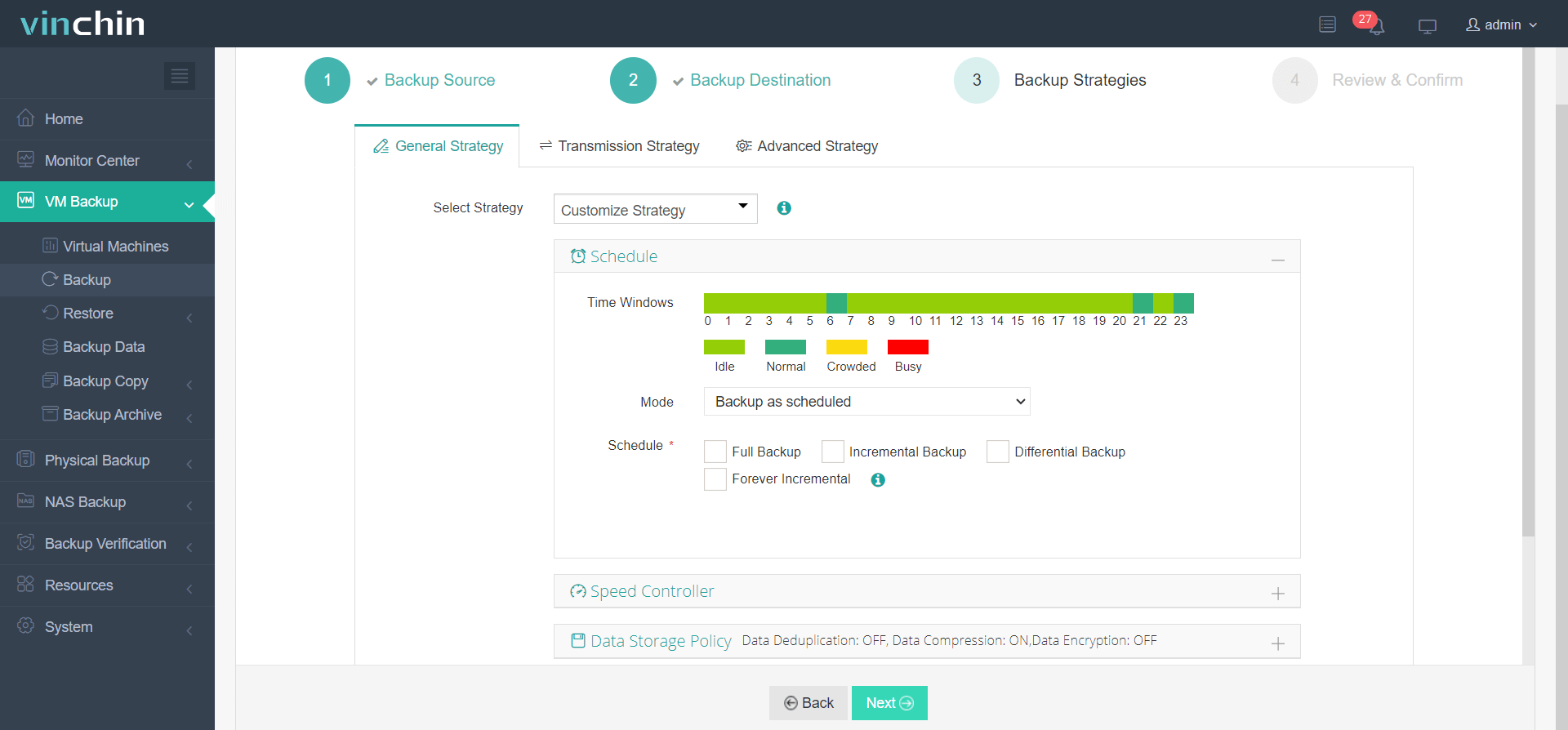
4. Submit the job
Vinchin Backup & Recovery has been selected by thousands of companies and you can also start to use this powerful system with a 60-day full-featured trial! Also, contact us and leave your needs, and then you will receive a solution according to your IT environment.
Conclusion
In summary, understanding the network structure of vSphere is crucial for all advanced features. Standard vSwitches connect different VMs on the same ESX Host, while Distributed vSwitches connect different VMs on different ESX Hosts to the same virtual switch, which allows VMs to migrate between different ESX Hosts as if they were always connected to the same vSwitch port.
Share on:


